‘No Help’ No More: How Indian Cops Are Taking Emergency Help to The Next Level
How long does it take for the police in different Indian cities to respond to emergencies? The good news is that the response time is reducing. And here are the reasons behind this improvement.
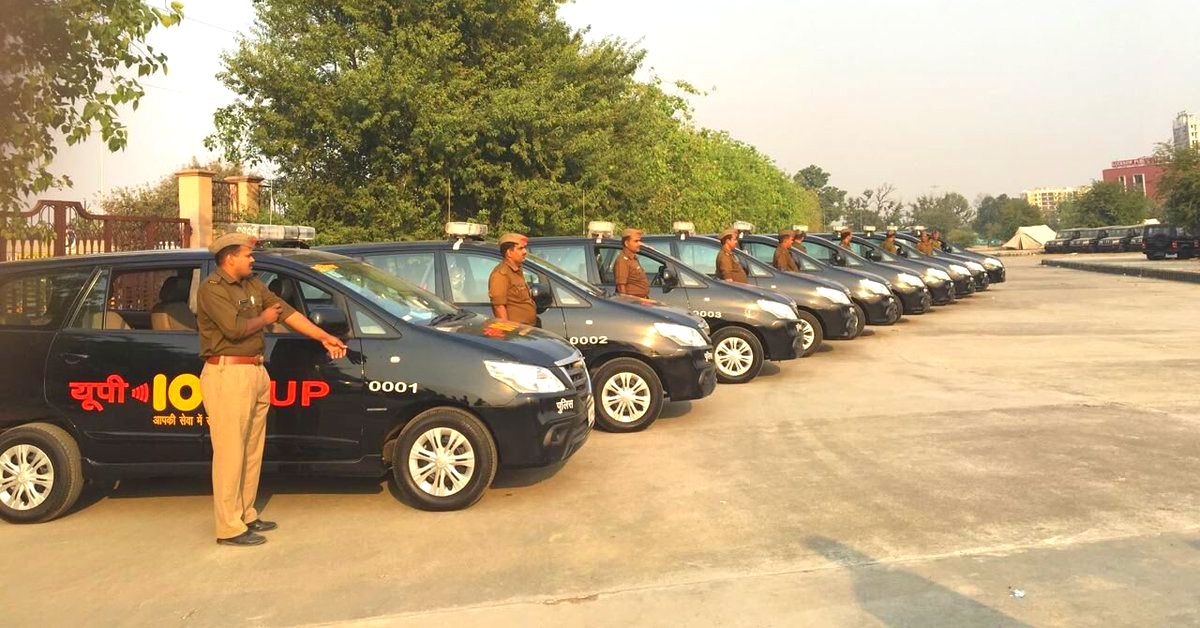
What do you do if you witness a robbery in progress at your neighbour’s home? You call the police. If you’re a resident of Haryana, the chances are that a police response vehicle will only arrive at the scene in 35-40 minutes, according to the state government’s press release.
By any measure, it’s too late. In short, these delays are due to inadequate infrastructure and workforce, a decentralised response system centred on individual districts, and inadequate technology enablement of police control rooms.
However, in mid 2017, the Haryana government took serious cognisance of the problem, enrolling Venkat Changavalli as an advisor. Changavalli is an expert in emergency response systems who had earlier helped 12 states develop their 108 ambulance service and the Uttar Pradesh Police in implementing their successful ‘UP 100’ police emergency response system.
A private sector professional with over 42 years of experience, Changavalli was the first CEO of the Hyderabad-based Emergency Management and Research Institute (EMRI). Today, he is assisting the Haryana Police to set up its state-of-the-art Centralised Emergency Management Centre in Panchkula, which they hope will enable police emergency response vehicles to reach over 2,500 citizens daily within 15 minutes.
Speaking to The Better India (TBI), Changavalli talked about the bottlenecks afflicting police emergency response systems in India and the solutions to fix them. According to him, there are five key bottlenecks afflicting police emergency response in India.
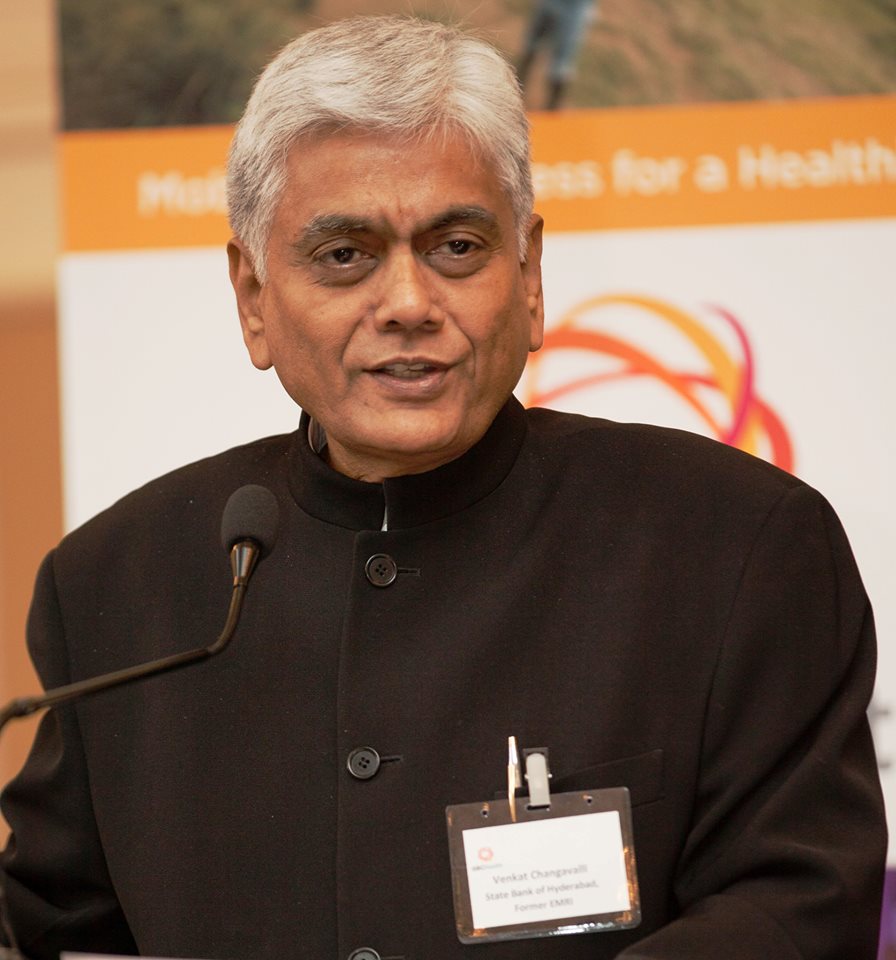
“For starters, it’s a design problem. Current police operations across many states are concentrated at the district level. When people call for help, the call is picked up at the district level. Essentially, one man is operating four-five phones who picks up the call, notes down the complaint and dispatches the call to the nearest police vehicle in the district. All this is done manually. With every district having its response system, what this means is the police in different jurisdictions will respond differently to a complaint depending on the resources at their disposal,” says Changavalli.
This is one outcome of not having a centralised response centre, where technology assists the one calling, transmits the call to the dispatcher, and eventually to the police personnel on the field. Without a centralised system in one district, the police will arrive at your doorstep in 15 minutes while in another, they may not even turn up depending on the nature of the complaint.
“The second problem is the infrastructure on the ground, particularly police response vehicles. There are no standardised vehicles fabricated with the necessary equipment to handle emergencies. If the police respond to a robbery, murder or dacoity, you have to ensure the safety of the police personnel and protect the crime scene. Either cars are unavailable or not equipped with a microphone, walkie-talkie, fire extinguisher or tactical gear. Thus, they merely transport vehicles and not emergency response ones,” he says.
Another critical problem is the absence of trained personnel who have the necessary soft skills to talk to complainants gently and patiently, calming them down in the event of an emergency. That friendly approach is absent. Police are trained to be rough, but in times of crisis, particularly for victims of trauma, these skills are necessary.
Fourthly, he argues, a standard operating procedure is absent in various police departments on how to respond to different emergencies. For example, theft is different from murder. A terror attack is different from a case of sexual assault. If there is mass killing or single murder, what is the standard operating procedure for the lowest ranking police officer who first arrives on the scene? Such questions aren’t answered satisfactorily.
Finally, there is the question of leadership, particularly among those heading the police stations. Their time is limited to filing FIRs, managing VIPs, and various other things outside of emergencies. How many people do they dedicate to emergency response? The same police constable has to perform record-keeping duties, take walk-in complaints and at the same time, respond to emergencies. There is always a trade-off since the said constable can’t do all of these things at the same time. How do they deploy their limited resources?
If you can better respond to emergencies, crimes can also be prevented.

Solutions
These were the problems Changavalli first encountered during his work with the Uttar Pradesh Police, when he joined them as advisor on 4 January 2015 on the invitation of the then chief minister Akhilesh Yadav. Working pro bono, he was there until 11 March 2017.
On 19 November 2016, the state launched the UP 100 police emergency management system.
Built on two lakh square feet area, the UP 100 Bhawan in Lucknow houses the call response centre, where 700 women attend emergency distress calls on 600 telephone lines round the clock at a state-of-the-art control room working in three shifts and receiving around 1,20,000 calls a day in regional dialects of Hindi, other languages and also in English.
On calls that require police action, all the information that the complainant provides is transferred digitally to a parallel control room handled by 400-odd policemen who dispatch the emergency to the closest UP 100 vehicle using GPS tracking and other geo-sensing facilities. There is a dedicated fleet of 700 SUVs for urban areas and another 2,500 for rural areas, besides 1,600 two-wheelers servicing more than 23,000 police personnel on patrol.
This is the centralised response system at the heart of UP 100.
So, how does this system work?
“When you call 100, a communication officer (a woman) is on the other side of the line, who takes a call that lasts around 30 seconds obtaining all the necessary information. These women Communication Officers (CO) have received prior training for two months on managing calls, understanding the technological processes, acquiring soft skills, related police activities and even first aid,” says Changavalli.
In front of the CO is a screen which tracks down essential information from the caller like the location of the caller, the nearest police station and response vehicle. After 30 seconds, the data from the screen is transferred to a Dispatch Officer (DO), a policeman. They don’t ask for the caller’s basic details because the DO already has that information.

The DO revalidates the information from the caller, sizes up the emergency, scopes it and gauges how many resources (number of police vehicles, police officers, constables and equipment) are required based on a Standard Operating Procedure (SOP). For example, if there is a theft, send one policeman with two constables. If there is a terror attack, send five police vans with a message to the local Superintendent of Police and the DGP.
The DO is essentially a decision maker and not merely a dispatcher. After validating all the information, he/she sends the information received on the screen to the identified vehicle. If the nearest vehicle is busy, they send it to the next one on the press of a button to a tablet-like device in the hands of the personnel at the designated police response vehicle.
In just a few minutes, all the information is transferred to the police personnel on the ground. No information is lost in the process. The task of this police emergency response centre is to ensure that the right information is collected, distilled, the problem correctly defined and then passed down to action. This is the first step of the Emergency Response Centre (ERC).
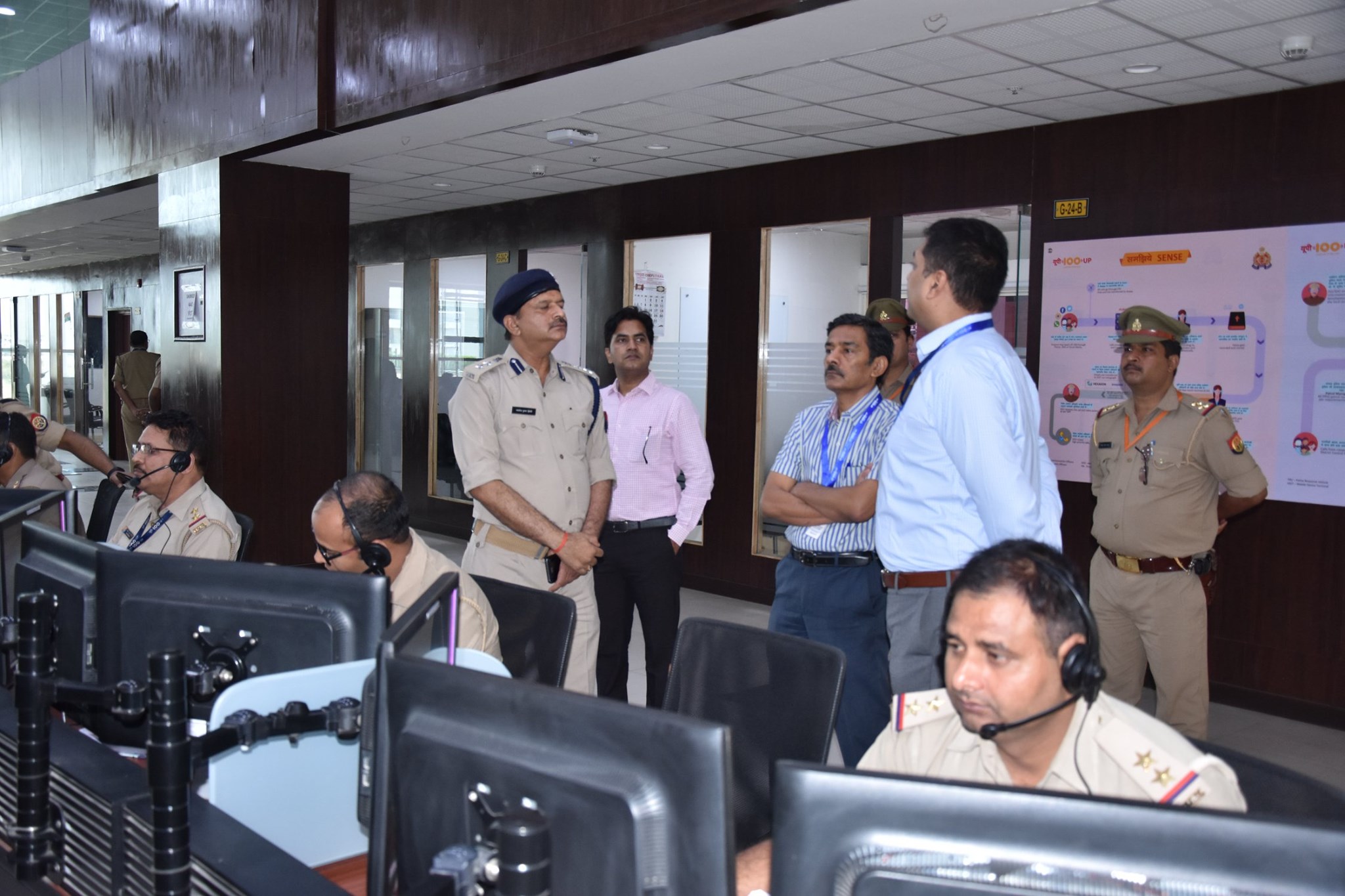
On the back end, meanwhile, Avaya, a technology company, manages the contact centre solutions, linking the information received on the call centre to the computer through a server. Then, computer-aided dispatch solutions connect the call centre to the vehicles on the ground. Inside the vehicle, there is a walky-talky radio, and the DO also relays the information using a wireless frequency radio just in case the information hasn’t been transmitted to him.
Depending on the nature of the complaint, they assist the complainant in filing an FIR on the spot.
Citizens can also access police assistance through social media platforms such as Facebook, Twitter and WhatsApp. Citizens can track the status of actionable call registered at UP 100 via phone call, SMS or web chat by providing the Event Number (created at the time of the call) and mobile number given at the time of registering the actionable call. An OTP will be sent to the registered mobile number to verify it. For UP 100, Mahindra Defence Systems Ltd was selected as the system integrator after a tender process.
“We also wrote down 550 SOPs for when the police reaches the crime scene, what they do there, where they park their vehicles, etc. A soft and a hard copy of the manual are available in the police vehicle, and the police personnel receive training too. Drivers are trained for ten days and dispatchers trained for 24 days to understand the technological process, besides learning some soft skills as well,” says Changavalli.
More critically, however, there is a dedicated team responding only to emergencies in every district. Their only job is to perform the patrolling work. They do not come from the main police department and thus eliminate the trade-off station house officers had to perform between dealing with an emergency versus a pending investigation.
This was a trade-off the UP Police has avoided by separating these duties thanks to UP 100. Personnel responding to emergencies are directly under UP 100 operational control.
“Out of the nearly 1,20,000 calls we pick up everyday, almost 15,000 dispatches are made. Of all these dispatches, 84 per cent are those that do not require the attention of personnel at the police station. The UP 100 system actually takes care of complaints that are very minor in nature. Thus, institutional response is available to the people, and no further action is required by the police station,” says UP Police Additional Director General Anil Agarwal, speaking to TBI.
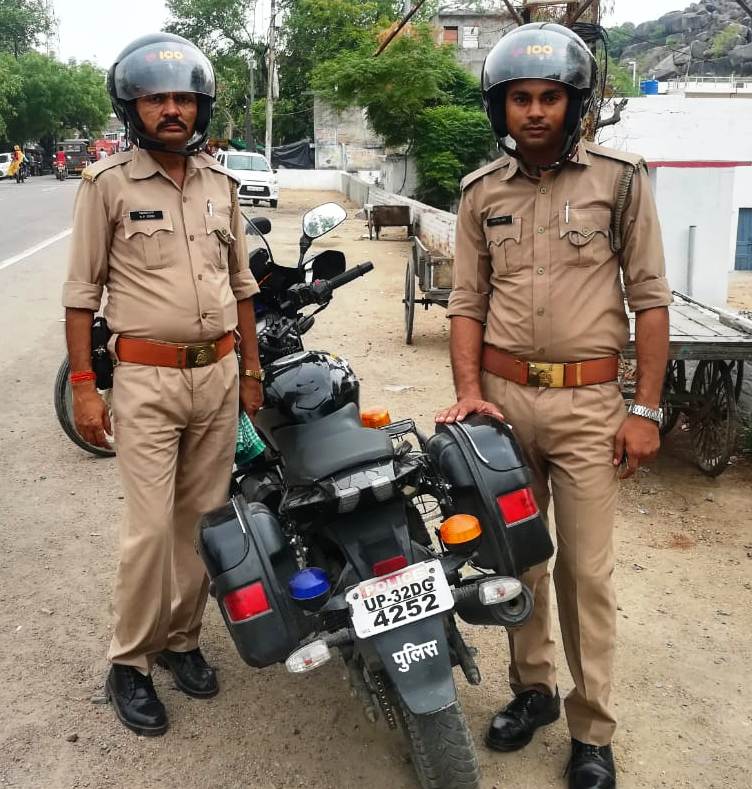
Therefore, this system has given police stations tremendous time to focus on actual serious crimes that are happening, instead of attending to every minor complaint. According to Agarwal, only 4.5 per cent of the calls UP 100 receives are related to crimes of serious nature (robbery, dacoity, murder, etc), in which the police station is expected to intervene immediately. This has led to tremendous optimisation in the utilisation of police manpower.
Benefits
From 19 November 2016 to 31 January 2019, UP 100 has responded to 10,495,159 events, of which 60 per cent came from rural areas. Interestingly, the system has even saved over 1,200 lives after attempts to commit suicide, says this report.
“The biggest benefit of UP 100 has been the reliability and availability of service round the clock, especially in remote corners of the state. Whether it’s responding to train accidents late into the night or individual women travelling at 2 am, whose vehicle has suffered a puncture, we are able to reach the spot in 10-15 minutes. This kind of reliability with the police was never even thought of earlier,” says Agarwal. This was unimaginable earlier.
“See, the average response time is about 13.5 minutes. This is an average across 15,000 events on a 24-hour basis across urban and rural areas. Approxiamtely 60 per cent of these calls are coming from rural areas. But the system is continuously improving. In urban areas, the police sometimes reach in less than three or five minutes. Sometimes in rural areas they take about 35 minutes because the terrain is difficult,” he adds.
Earlier, there wasn’t even a metric to measure response time.
“It is empowering the poorest and the down-trodden who are now assured that police will come if they call 100,” says UP Police Additional Director General Anil Agarwal, speaking to the Economic Times. “The main benefit hence is the declining influence of the politicians on police. Earlier, the local politician could manage matters at the police station level, and the police would hardly respond to calls for help at the district level.”
“Now all calls come to the Lucknow-based UP 100′ HQs, and each call is recorded and documented, and the same is covered under RTI. If a vehicle does not respond, the caller can prove through RTI that he called, but help was not given. No incident can hence be swept under the carpet. No neta can manipulate this system,” adds Agarwal.
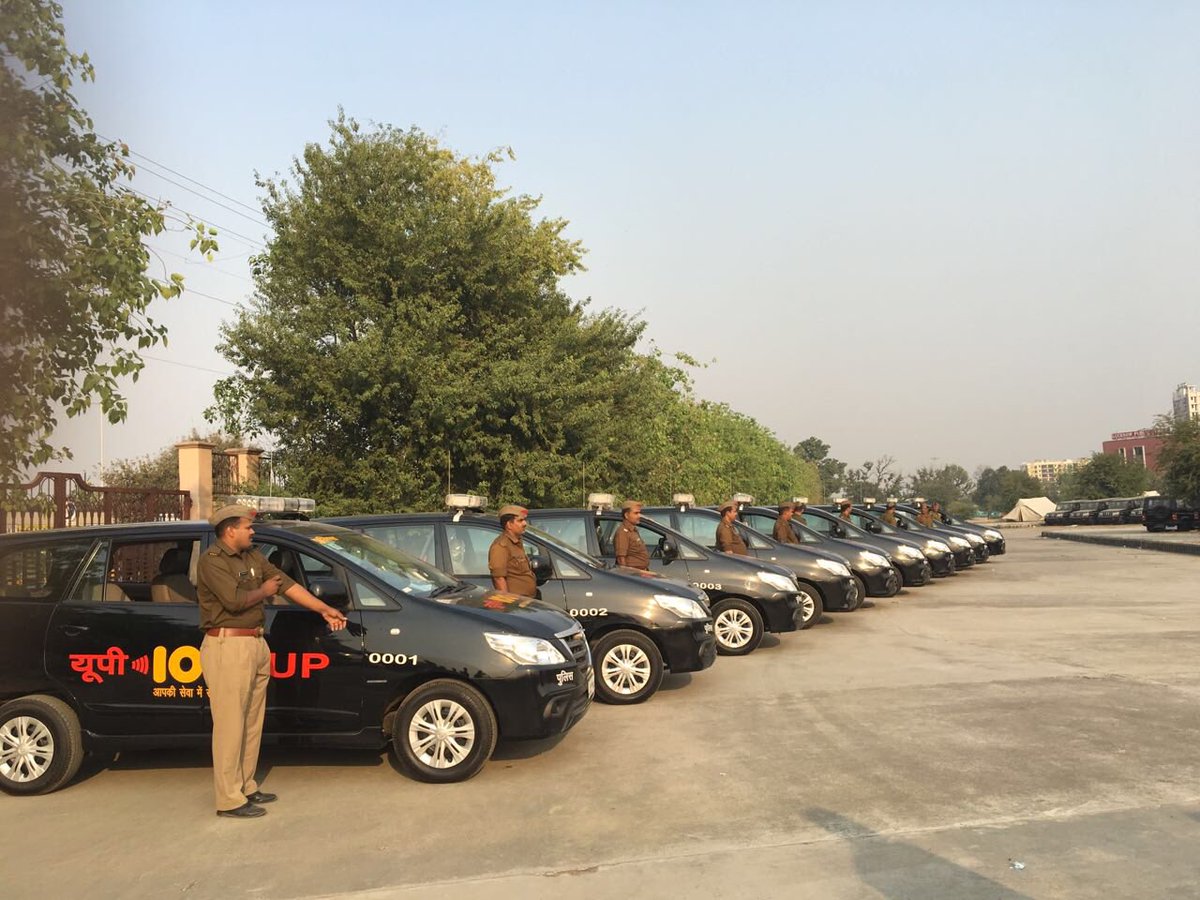
“It’s the rural areas that have seen the biggest difference. The UP 100 model should be replicated in other states,” says Changavalli.
Recent incidents of police brutality and random arrests over social media posts have brought a bad name to the UP Police. However, there remains a critical shortfall in police personnel to maintain law and order in India’s most populous state. According to this study, it has less than 100 police staff for 100,000 population, which is way below the United Nations-recommended ratio of 222. Managing violent mobs, for example, is still problematic.
Also Read: Their Future Was A Brick Kiln, But Top Cop & NGO Ensure 800 Kids Bag a New Destiny
“Of course, there is a huge shortage of manpower. We need to deploy every single person to their optimum level. Even in police station, there is a shortage of manpower. When we were implementing this system initially, there was a huge hue and cry. People would say ‘there is already so much shortage in the police station, and you’re taking out so many personnel for this kind of system, how will the system work?’ In UP Police, we have about 3 lakh personnel, out of which we took out 20,000-odd for UP 100, and these guys are taking care of 85 per cent of the public complaints. So that is the magnitude of the challenge,” says Agrawal.
The development of a system like UP 100 or the ‘Dial 100’ initiative of the Pune Police, which has reduced response time to five to eight minutes, are critical first steps to addressing some of the significant concerns regarding policing. If you call for help, at least the police will arrive on time to give you the necessary assistance.
(Edited by Saiqua Sultan)
Like this story? Or have something to share? Write to us: [email protected], or connect with us on Facebook and Twitter.
If you found our stories insightful, informative, or even just enjoyable, we invite you to consider making a voluntary payment to support the work we do at The Better India. Your contribution helps us continue producing quality content that educates, inspires, and drives positive change.
Choose one of the payment options below for your contribution-
By paying for the stories you value, you directly contribute to sustaining our efforts focused on making a difference in the world. Together, let’s ensure that impactful stories continue to be told and shared, enriching lives and communities alike.
Thank you for your support. Here are some frequently asked questions you might find helpful to know why you are contributing?


This story made me
- 97
- 121
- 89
- 167










